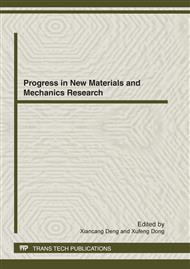p.212
p.217
p.222
p.227
p.233
p.238
p.243
p.249
p.253
Study on the Preparation of Flame-Retardant Polyacrylonitrile Fiber by Surface Modification
Abstract:
In this article, a new process was used to make flame resistant polyacrylonitrile (PAN) fibers by surface modification. The effects of the treating conditions during the copper ion treatment, aqueous mixture of hydrazine hydrate treatment and high temperature treatment on the mechanical properties and flammability of the resultant flame resistant fibers were studied. The results showed that the optimum reactiong conditions were: the addition of hydrazine hydrate 20mL, drying time 3min, heating temperature 160°C and heating time 180min.Under these conditions, the flame-retardant PAN fiber with good mechanical properties could be obtained.
Info:
Periodical:
Pages:
233-237
Citation:
Online since:
April 2012
Authors:
Price:
Сopyright:
© 2012 Trans Tech Publications Ltd. All Rights Reserved
Share:
Citation:


